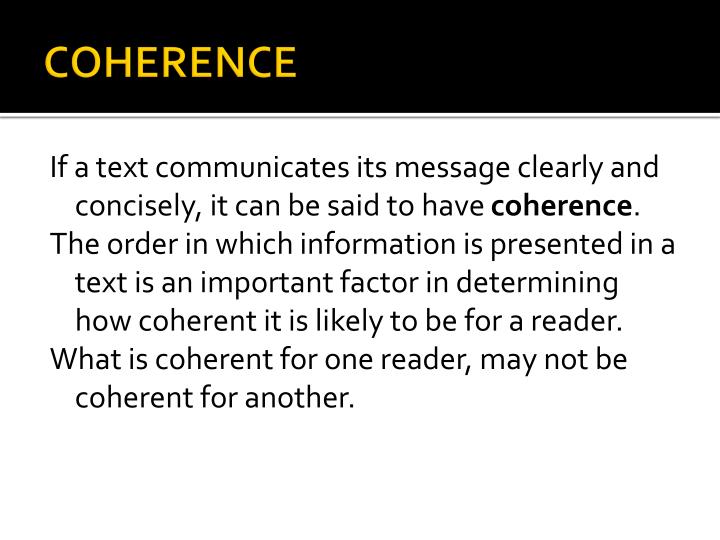

Coherence can be improved with the use of an outline of the content, which can be made before writing the articles or even after completion of writing, giving us an understanding of the flow of ideas and concepts in the article and their relationship.
Repeated words/ideas, reference words, transition signals, substitution, and ellipsis are some of the techniques which can be used to achieve cohesion while topic sentences, thesis statement, the summary are the techniques used to achieve coherence. Proper placement and arrangement of the pieces will only ensure the formation of the picture. Even if the shape and size of parts fit correctly does not conclude that the picture is correct. It can be understood with the help of one more example of puzzling pieces that are connected to form a particular picture. But coherent content is always cohesive as it is the arrangement of cohesive sentences together to put up a meaningful and understandable article. The cohesive content doesn’t need to be always coherent. The cohesion properties focus only on the grammatical and lexical structure of sentences, while coherence deals with the semantics. In our above example, when the bricks( cohesive objects) are organized together, then only the building(coherence) is constructed. But when these sentences and paragraphs are put together to form our writing, then the coherence is determined with the help of parameters like the organization of the cohesive components and connection of the ideas and understandability of the content as a whole. Similar is the case with sentences and paragraphs is they are grammatically correct and represent a certain idea. Bricks are internally strong because their content is stick together. 
The building represents coherence, while the bricks represent cohesion.

Let us see with the help of an analogy of a building.Let us discuss some of the major key differences: Key Difference Between Coherence vs Cohesion







 0 kommentar(er)
0 kommentar(er)
